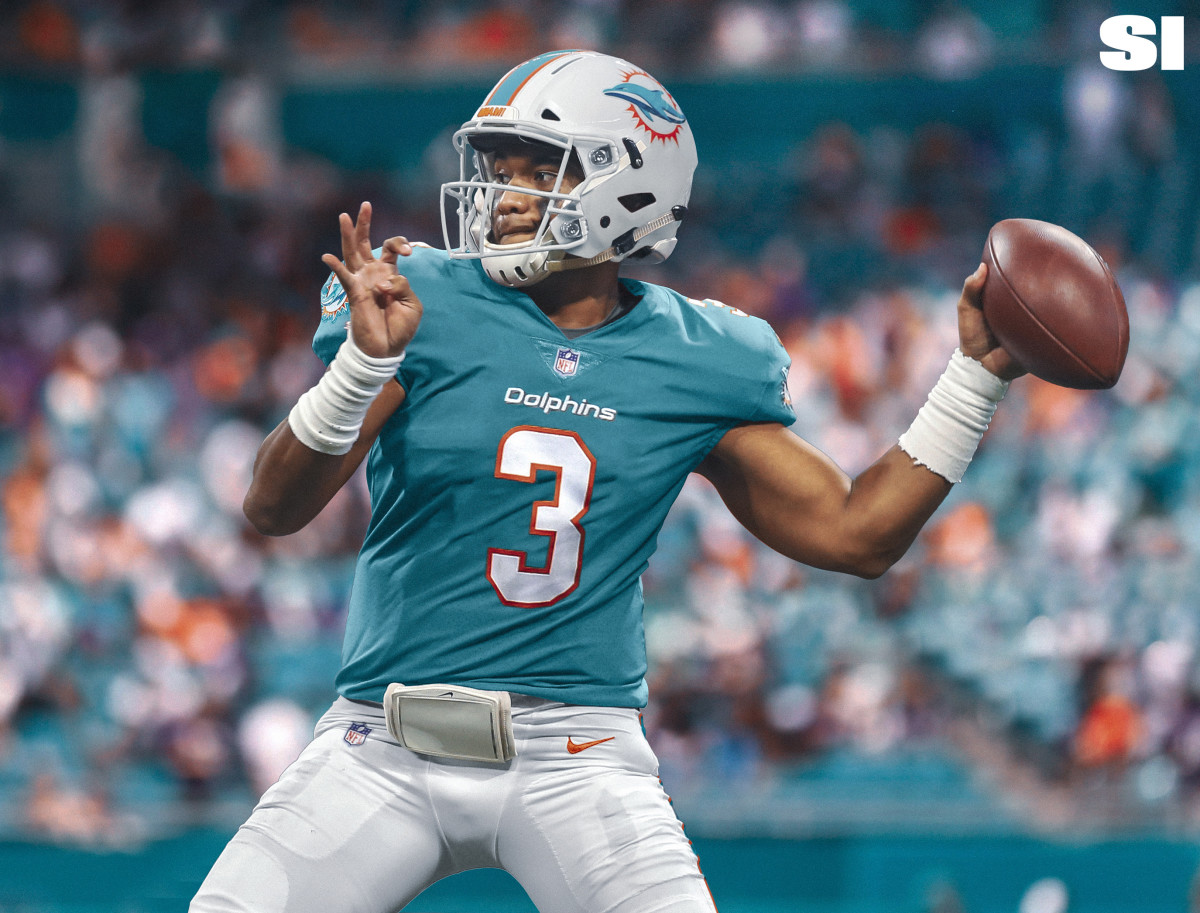SEC Secures College Football Dominance for Years to Come With Biggest Draft Flex Yet
The first three rounds of the NFL draft were a smorgasbord of Southeastern Conference success. From the first pick to the 106th, from quarterbacks to linemen, from offense to defense, the league force-fed its dominance to the nation. College football fans already dealing with SEC fatigue were handed another spoonful to digest Thursday and Friday.
Actually, 40 spoonfuls. That’s how many SEC players were drafted, out of 106 total picks, by far the most ever from a single conference through three rounds. It was an endless wave of SEC names and highlights rolling by, and it almost assuredly guarantees one other thing: this trend will continue.
More than national championships, high school star prospects crave a path to the NFL. It’s the most effective recruiting tool a school can have, and it’s the tool the SEC has used to build an empire. Now the empire will only grow stronger.
And not because of media hype, the common and overly vague complaint employed by those tired of being trampled underfoot by the SEC. Not because of an eight-game league schedule. Not because of a reluctance to play games outside the SEC footprint.
The empire will grow stronger because players see the league as the surest way to the pros. This is not a new concept—the SEC routinely cleans up in recruiting and routinely has the most players drafted—but the league has never flexed like it is right now.
Still, some folks whose allegiances reside with teams in other leagues were refusing to accept the abundant evidence on display. They wanted to dismiss this SEC avalanche as the product of two exceptional teams, LSU (10 picks) and Alabama (nine), not proof that the entire league is a step ahead. (This is a standard complaint that is often tied to an SEC team winning a national title, as has been the case 10 times in the last 14 seasons.)

But the numbers don’t lie, and the numbers indicate that the SEC not only has the most NFL-level talent at the top but the most talent throughout. Thirteen of the 14 schools in the league had a player taken in the top three rounds. The only one that didn’t was Mississippi, which probably should get half credit for Florida wide receiver Van Jefferson, a transfer from the Rebels.
Five different SEC schools had players picked in the top 10. No other conference had more than one school represented in the top 10.
In terms of draft numbers, the SEC is no more top-heavy than any other Power Five league, and probably less than the others. A simple math exercise underscores that point: remove the two teams that played in every conference championship game in 2019, and who had the most players drafted in the top-three rounds?
SEC: Remove LSU’s 10 selections and Georgia’s three, and the league had 27 players picked from 11 schools. The breakdown: Alabama nine; Florida four; Auburn three; Mississippi State three; South Carolina two; Tennessee, Texas A&M, Vanderbilt, Kentucky, Missouri and Arkansas one each.
Big Ten: Remove Ohio State’s seven selections and Wisconsin’s two, and the league had eight players picked from four schools. The breakdown: Iowa three; Penn State two; Michigan two; Minnesota one. Eight schools did not have a top-three pick.
Big 12: Remove Oklahoma’s four selections and Baylor’s one, and the league had six players picked from three schools. The breakdown: TCU four (from a 5-7 team, yikes); Texas two; Texas Tech one. Five schools did not have a top-three pick.
Atlantic Coast: Remove Clemson’s four selections (Coastal Division champion Virginia had none), and the league had four players picked from four schools: Louisville, Florida State, Boston College and Virginia Tech one each. Nine schools did not have a top-three pick.
Pac-12: Remove Utah’s four selections and Oregon’s one, and the league had seven players picked from five schools: USC and Colorado two each; Arizona State, California and UCLA one each. Five schools did not have a top-three pick.

The ultimate stat: you could take away LSU, Georgia and Alabama from the SEC’s three-round draft tally and the league still would have had more picks (18) than any other.
In terms of both NFL player production and competing for a spot in the College Football Playoff, the sport’s power base currently is consolidated in the following locales: the top third of the SEC, Ohio State, Clemson and an incomplete Oklahoma program that needs to figure out defense in order to compete with the others.
This is not ideal.
Far better for the sport to regain some semblance of regional balance and conference depth, wherein other programs have the upward mobility to compete for a national title. Utah looked like it could be the breakthrough program in 2019, going 11-1 in the regular season and having a great shot at a playoff bid, but then the Utes flopped against Oregon in the Pac-12 title game. With four draft picks Thursday and Friday, Utah stood side-by-side with Oklahoma and Clemson, and one ahead of Georgia.
Of course, it would also help if some notable recent underachievers stepped up their game. Looking at you, Florida State, Miami, Texas, Michigan, USC and Texas A&M.
Until that happens, the SEC will continue to get the most elite recruits and produce the most pro draft picks. It likely will also win the most national championships. The league already has dominated the 21st century, but it has never flexed as powerfully as it is right now.
